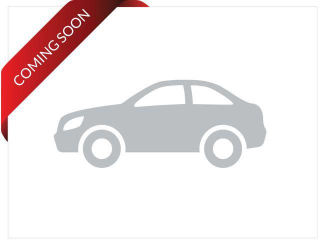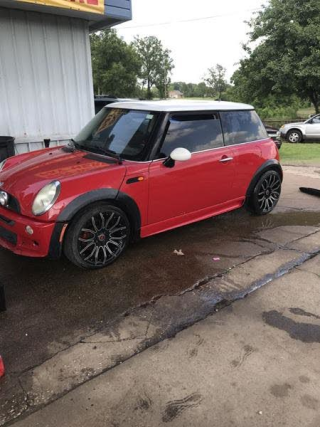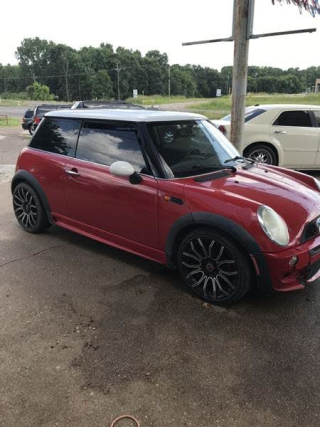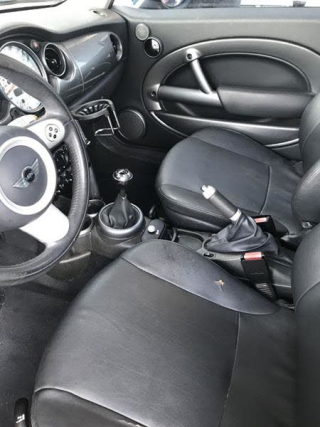The 2006 Mini Cooper marks the final year of the first-generation (R50/R53) BMW-era Mini, a vibrant 2-door hatchback that revived an icon. Offered as the base Cooper and the supercharged Cooper S, its new pricing ranged from approximately $16,000 to over $21,000. It stands out for its distinctive retro-modern design, unparalleled "go-kart" handling, and a unique, fun-to-drive personality that captured hearts globally.
The Good
Its key advantages include legendary "go-kart" handling for an exhilarating emotional driving experience, and an iconic, timeless design. Practically, it offers surprisingly good fuel efficiency (base model), compact dimensions perfect for urban maneuverability, and a premium feel, making it a stylish yet functional choice for many.
The Bad
Known weaknesses for the 2006 Mini Cooper include frequent power steering pump failures, problematic CVT transmissions in base models, and specific supercharger maintenance needs for the "S" trim. Other concerns involve electrical gremlins, coolant leaks, and potential rust issues, demanding careful pre-purchase inspection.
2006 Mini Cooper: Quick Overview
- Engine Options:
- 1.6-liter Tritec I4 (naturally aspirated) for the Cooper model.
- Supercharged 1.6-liter Tritec I4 for the Cooper S model.
- Horsepower:
- Cooper: 115 hp
- Cooper S: 168 hp (for 2005-2006 models; earlier R53s were 163 hp)
- Fuel Economy (EPA estimated, Manual Transmission):
- Cooper: Approximately 28 MPG city / 37 MPG highway
- Cooper S: Approximately 24 MPG city / 33 MPG highway
- 0-60 MPH Times:
- Cooper: Roughly 8.5 - 9.0 seconds
- Cooper S: Roughly 6.5 - 7.0 seconds
- Towing Capacity: Not officially rated or recommended for towing.
- Trim-Level Features:
- Cooper (Base): Standard features included power windows, power mirrors, remote central locking, air conditioning, AM/FM stereo with CD player, and 15-inch alloy wheels.
- Cooper S: Added performance enhancements such as the supercharged engine, sport-tuned suspension, larger disc brakes, sport seats, a functional hood scoop, dual exhaust, and 16-inch alloy wheels.
- Optional Features (for both trims): Many features were optional, allowing for significant customization. These included:
- Panoramic sunroof (very popular)
- Xenon headlights
- Heated front seats
- Harman Kardon premium sound system
- Navigation system (small screen in the center speedometer)
- Automatic climate control
- Dynamic Stability Control (DSC)
- Various wheel and tire upgrades
- Leather upholstery options
- Sport packages with firmer suspension and different styling cues.
2006 Mini Cooper Specifications
Vehicle Information
| Year | 2006 |
| Make | Mini |
| Model | Cooper |
| Trim | - |
| Style | Hatchback |
| Type | Hatchback |
| Category | Minicompact Car |
Manufacturing Details
| Made In | United Kingdom |
| Manufacturing City | OXFORD |
Dimensions
| Doors | 2-Door |
| Curb Weight | 1240.12 kg |
| Gross Vehicle Weight Rating | 1574.87 kg |
| Overall Height | 140.97 cm |
| Overall Length | 363.47 cm |
| Overall Width | 168.91 cm |
| Wheelbase Length | 246.63 cm |
| Standard Seating | 4 |
Engine & Performance
| Engine | 1.6-L I4 |
| Engine Size | 1.6L |
| Engine Cylinders | 4 |
| Transmission | Automatic |
| Transmission Type | Automatic |
| Transmission Speeds | Continuously Variable |
| Drivetrain | Front-Wheel Drive |
Additional Features
| Anti-Brake System | 4-Wheel ABS |
| Steering Type | Rack & Pinion |
Pricing
| Manufacturer Suggested Retail Price (MSRP) | $21,950 USD |
| Invoice Price | $19,837 USD |
| Delivery Charges | $550 USD |
Vehicle History Report
Vehicle
Specifications
Specifications
Ownership
History
History
All History
Events
Events
NMVTIS Title
History Check
History Check
Salvage/Rebuilt
Check
Check
Accident
Check
Check
Theft
Check
Check
Open Lien
Check
Check
Past Sale
Listings
Listings
Safety
Recalls
Recalls
Odometer
Check
Check
Market Price
Analysis
Analysis
What Problems Does the 2006 Mini Cooper Have?
The 2006 Mini Cooper, while charming, is known for several frequently reported problems and long-term reliability concerns. Perhaps the most infamous issue is the **power steering pump failure**. This is a widespread problem across the R50/R53 generation, often leading to a complete loss of power steering, and is an expensive repair. Relatedly, there was a recall (NHTSA Campaign ID 06V366000) for a potential fire risk from the power steering pump fan/wiring, though the pump itself failing is a separate, common mechanical issue.
Another significant concern for the base Cooper (R50) is the **CVT automatic transmission**. These units are prone to premature failure, exhibiting slipping, shuddering, or complete loss of drive, making manual transmission R50s generally more desirable for reliability.
For the Cooper S (R53), the **supercharger** requires specific maintenance, including regular oil changes for the supercharger unit itself. Neglecting this can lead to costly failures. The water pump and various tensioner pulleys in the supercharger belt system are also common failure points.
General long-term issues include **electrical gremlins**, such as failing window regulators, intermittent dashboard warnings, and issues with airbag sensors. **Coolant leaks** are common, often originating from the thermostat housing, expansion tank, or various hoses which degrade over time. **Oil leaks** can also be prevalent, particularly from the oil pan gasket, valve cover gasket, and the crank sensor O-ring. Suspension components like **rear control arm bushings** tend to wear out, causing clunking noises. Finally, **rust** can be a concern, appearing around the tailgate handle, fuel filler cap, and rocker panels, especially in regions with harsh winters.
Another significant concern for the base Cooper (R50) is the **CVT automatic transmission**. These units are prone to premature failure, exhibiting slipping, shuddering, or complete loss of drive, making manual transmission R50s generally more desirable for reliability.
For the Cooper S (R53), the **supercharger** requires specific maintenance, including regular oil changes for the supercharger unit itself. Neglecting this can lead to costly failures. The water pump and various tensioner pulleys in the supercharger belt system are also common failure points.
General long-term issues include **electrical gremlins**, such as failing window regulators, intermittent dashboard warnings, and issues with airbag sensors. **Coolant leaks** are common, often originating from the thermostat housing, expansion tank, or various hoses which degrade over time. **Oil leaks** can also be prevalent, particularly from the oil pan gasket, valve cover gasket, and the crank sensor O-ring. Suspension components like **rear control arm bushings** tend to wear out, causing clunking noises. Finally, **rust** can be a concern, appearing around the tailgate handle, fuel filler cap, and rocker panels, especially in regions with harsh winters.
How long will the 2006 Mini Cooper last?
With meticulous and proactive maintenance, a 2006 Mini Cooper can reliably reach 150,000 to 200,000 miles, with many owners keeping them for 10-15+ years. The core engine and body structure are generally durable. However, long-term ownership reveals weaknesses primarily in ancillary systems and wear items. Electrical components become more prone to glitches, and all plastic and rubber components (hoses, gaskets, bushings) degrade significantly with age, leading to leaks and suspension issues. The persistent power steering pump failure and the base model's CVT transmission are major long-term reliability risks that can shorten a car's lifespan if not addressed. Rust also becomes more pronounced over time in exposed areas, impacting aesthetics and structural integrity in severe cases. This generation requires dedicated care to achieve high mileage.
What Technology & Safety Features are Included?
The 2006 Mini Cooper, while focused on driving dynamics, offered a respectable array of built-in tech, entertainment, and safety features for its time.
Built-in Tech & Entertainment: Standard equipment included an AM/FM stereo with a CD player. Owners could upgrade to an optional Harman Kardon premium sound system for enhanced audio quality. A basic trip computer provided essential information. A unique, though somewhat small, optional navigation system was available, integrated into the large central speedometer.
Driver-Assistance Features: All models came standard with Anti-lock Brakes (ABS), Cornering Brake Control (CBC), and Electronic Brakeforce Distribution (EBD), enhancing vehicle control during braking and cornering. Optional Dynamic Stability Control (DSC) was available (and became standard on some higher-trim Cooper S models), providing active traction and stability management.
Safety Features: Standard safety equipment included dual front airbags and seatbelt pretensioners. Side curtain airbags were often an optional extra, though sometimes standard on higher trims, offering additional head protection in side impacts. The LATCH system for child seat installation was also provided.
Optional Features: Beyond the previously mentioned entertainment and driver-assistance options, popular optional features included Xenon headlights for improved visibility, front fog lights, rain-sensing windshield wipers, heated front seats, and automatic climate control for added comfort. The panoramic sunroof was a highly sought-after option.
Crash-Test Ratings:
Built-in Tech & Entertainment: Standard equipment included an AM/FM stereo with a CD player. Owners could upgrade to an optional Harman Kardon premium sound system for enhanced audio quality. A basic trip computer provided essential information. A unique, though somewhat small, optional navigation system was available, integrated into the large central speedometer.
Driver-Assistance Features: All models came standard with Anti-lock Brakes (ABS), Cornering Brake Control (CBC), and Electronic Brakeforce Distribution (EBD), enhancing vehicle control during braking and cornering. Optional Dynamic Stability Control (DSC) was available (and became standard on some higher-trim Cooper S models), providing active traction and stability management.
Safety Features: Standard safety equipment included dual front airbags and seatbelt pretensioners. Side curtain airbags were often an optional extra, though sometimes standard on higher trims, offering additional head protection in side impacts. The LATCH system for child seat installation was also provided.
Optional Features: Beyond the previously mentioned entertainment and driver-assistance options, popular optional features included Xenon headlights for improved visibility, front fog lights, rain-sensing windshield wipers, heated front seats, and automatic climate control for added comfort. The panoramic sunroof was a highly sought-after option.
Crash-Test Ratings:
- NHTSA (National Highway Traffic Safety Administration):
- Frontal Driver: 4 Stars
- Frontal Passenger: 4 Stars
- Side Driver: 3 Stars
- Side Passenger: 4 Stars
- Rollover: 4 Stars
- IIHS (Insurance Institute for Highway Safety):
- Moderate Overlap Front: Good
- Side Impact: Acceptable (when equipped with optional side airbags)
- Rear Crash Protection/Head Restraints: Poor
What Colors Options are Available?
2006 Mini Cooper Prices and Market Value
When new in 2006, the base Mini Cooper started around $16,450, while the sportier Cooper S began at approximately $20,950, with fully optioned S models pushing past $25,000. Today, current used market prices vary significantly based on condition, mileage, and trim. Expect a range from $3,000 for well-used examples up to $8,000 or more for well-maintained Cooper S models, particularly those with desirable options and a manual transmission. Exceptionally clean, low-mileage examples can sometimes command even higher prices.
Depreciation for the first-generation Mini Cooper was substantial initially. However, well-preserved R53 Cooper S models are now often seen as future classics, with their depreciation stabilizing or even seeing slight upticks for premium examples. Factors affecting current resale value include a comprehensive service history, evidence of common issues being proactively addressed (e.g., power steering pump replacement), the condition of the interior and exterior, and importantly, the transmission type—manuals are highly preferred due to the CVT's reliability concerns. Lower mileage is generally beneficial, but verified maintenance history often carries more weight for these enthusiast cars.
Depreciation for the first-generation Mini Cooper was substantial initially. However, well-preserved R53 Cooper S models are now often seen as future classics, with their depreciation stabilizing or even seeing slight upticks for premium examples. Factors affecting current resale value include a comprehensive service history, evidence of common issues being proactively addressed (e.g., power steering pump replacement), the condition of the interior and exterior, and importantly, the transmission type—manuals are highly preferred due to the CVT's reliability concerns. Lower mileage is generally beneficial, but verified maintenance history often carries more weight for these enthusiast cars.
2006 Mini Cooper Cost of Ownership
Insurance costs for a 2006 Mini Cooper can be moderate to high, especially for the Cooper S, reflecting its performance nature. Fuel efficiency is decent for the base Cooper, but the Cooper S requires premium fuel. Where ownership costs escalate significantly is with maintenance and repairs. Parts, being BMW-sourced, are often more expensive than typical compacts, and labor can be high due to specialized knowledge and cramped engine bay. Common issues like power steering pump failures, CVT transmission problems, and supercharger servicing represent substantial repair bills. Therefore, the 2006 Mini Cooper is generally a **costly** vehicle to own long-term, requiring a dedicated budget for preventative maintenance and potential repairs. It's a passion purchase, not an economy car.
2006 Mini Cooper Fuel Efficiency
Fuel Type
Gasoline
Fuel Capacity
34.18 liters
City Mileage
4.34 km/l
Highway Mileage
3.23 km/l
2006 Mini Cooper Safety Rating
NHTSA
IIHS
2006 Mini Cooper Warranty
Basic
Original warranty
48 months / 50,000 miles
Estimated remaining
Expired
Powertrain
Original warranty
48 months / 50,000 miles
Estimated remaining
Expired
Rust
Original warranty
144 months / unlimited miles
Estimated remaining
Expired
2006 Mini Cooper Insurance
Insurance for a 2006 Mini Cooper is moderately priced, reflecting its status as a Hatchback with strong safety ratings and
reasonable repair costs.
reasonable repair costs.
How Does the 2006 Mini Cooper Compare to Other Hatchback?
The 2006 Mini Cooper competed in the burgeoning hot hatch segment against rivals like the Volkswagen GTI (Mk5), Honda Civic Si, Mazda 3/Mazdaspeed3, and even performance-oriented Toyota Corollas (XRS) or Ford Focus SVT models.
In terms of Performance, the Cooper S (R53) stands out for its unique supercharged power delivery and highly engaging "go-kart" handling. It's incredibly agile and fun in corners, often considered more dynamically involving than most rivals. While competitive with a Civic Si in straight-line acceleration, a Mazdaspeed3 might offer more raw power. The base Cooper, however, is significantly less performance-oriented.
Regarding Features, the Mini offered a distinctly premium and customizable interior for a small car, with unique styling cues and optional luxury items like a panoramic roof, Harman Kardon sound, and Xenon headlights. A GTI offered a more refined, upscale European interior, while the Civic Si focused on functional, driver-centric features.
Reliability is where the 2006 Mini Cooper often struggles against its Japanese counterparts. Honda Civic Si and Toyota Corolla XRS models of this era are legendary for their bulletproof reliability and lower maintenance costs. The GTI, while generally more reliable than the Mini, still has its own set of common issues. The Mini's well-documented problems, such as power steering pump failures, CVT transmission issues, and specific supercharger maintenance, mean higher long-term repair costs compared to more dependable rivals.
On Price, used 2006 Minis can be found at relatively low entry points due to initial depreciation. However, better-maintained Civic Si and GTI models often command higher resale values due to their perceived reliability and strong demand.
Alternatives:
In terms of Performance, the Cooper S (R53) stands out for its unique supercharged power delivery and highly engaging "go-kart" handling. It's incredibly agile and fun in corners, often considered more dynamically involving than most rivals. While competitive with a Civic Si in straight-line acceleration, a Mazdaspeed3 might offer more raw power. The base Cooper, however, is significantly less performance-oriented.
Regarding Features, the Mini offered a distinctly premium and customizable interior for a small car, with unique styling cues and optional luxury items like a panoramic roof, Harman Kardon sound, and Xenon headlights. A GTI offered a more refined, upscale European interior, while the Civic Si focused on functional, driver-centric features.
Reliability is where the 2006 Mini Cooper often struggles against its Japanese counterparts. Honda Civic Si and Toyota Corolla XRS models of this era are legendary for their bulletproof reliability and lower maintenance costs. The GTI, while generally more reliable than the Mini, still has its own set of common issues. The Mini's well-documented problems, such as power steering pump failures, CVT transmission issues, and specific supercharger maintenance, mean higher long-term repair costs compared to more dependable rivals.
On Price, used 2006 Minis can be found at relatively low entry points due to initial depreciation. However, better-maintained Civic Si and GTI models often command higher resale values due to their perceived reliability and strong demand.
Alternatives:
- For better reliability and balanced performance: A Honda Civic Si (EP3 or later FG2/FA5) or a Mazda 3 (first generation, particularly the S trim or Mazdaspeed3) would be strong contenders.
- For a more refined yet still fun driving experience: The Volkswagen GTI (Mk5) is an excellent choice.
- While nothing quite replicates the Mini's unique charm and driving feel, these alternatives offer a more pragmatic balance of performance, features, and long-term reliability.
Final Verdict: Is the 2006 Mini Cooper a Good Hatchback?
The 2006 Mini Cooper is ideal for driving enthusiasts who prioritize a unique, "go-kart" driving experience, iconic styling, and a strong sense of personality over absolute reliability or low running costs. It's perfect for urban dwellers seeking nimble maneuverability and a distinctive presence.
Is it worth buying? Yes, but with significant caveats. It is absolutely a used-car purchase now, as new car depreciation has run its course. For the best experience, the **Cooper S (R53) with a manual transmission** is the highly recommended trim, offering the most engaging performance. Avoid the base Cooper with the CVT transmission unless it has a documented recent replacement, due to its well-known reliability issues.
The critical condition for purchase is a **thorough pre-purchase inspection by a Mini specialist** and a **comprehensive service history**. Buyers must be prepared for potentially higher maintenance and repair costs, as these cars demand proactive care. It's a passion purchase for those willing to invest in its upkeep, rather than a pragmatic choice for basic, worry-free transportation.
Is it worth buying? Yes, but with significant caveats. It is absolutely a used-car purchase now, as new car depreciation has run its course. For the best experience, the **Cooper S (R53) with a manual transmission** is the highly recommended trim, offering the most engaging performance. Avoid the base Cooper with the CVT transmission unless it has a documented recent replacement, due to its well-known reliability issues.
The critical condition for purchase is a **thorough pre-purchase inspection by a Mini specialist** and a **comprehensive service history**. Buyers must be prepared for potentially higher maintenance and repair costs, as these cars demand proactive care. It's a passion purchase for those willing to invest in its upkeep, rather than a pragmatic choice for basic, worry-free transportation.




